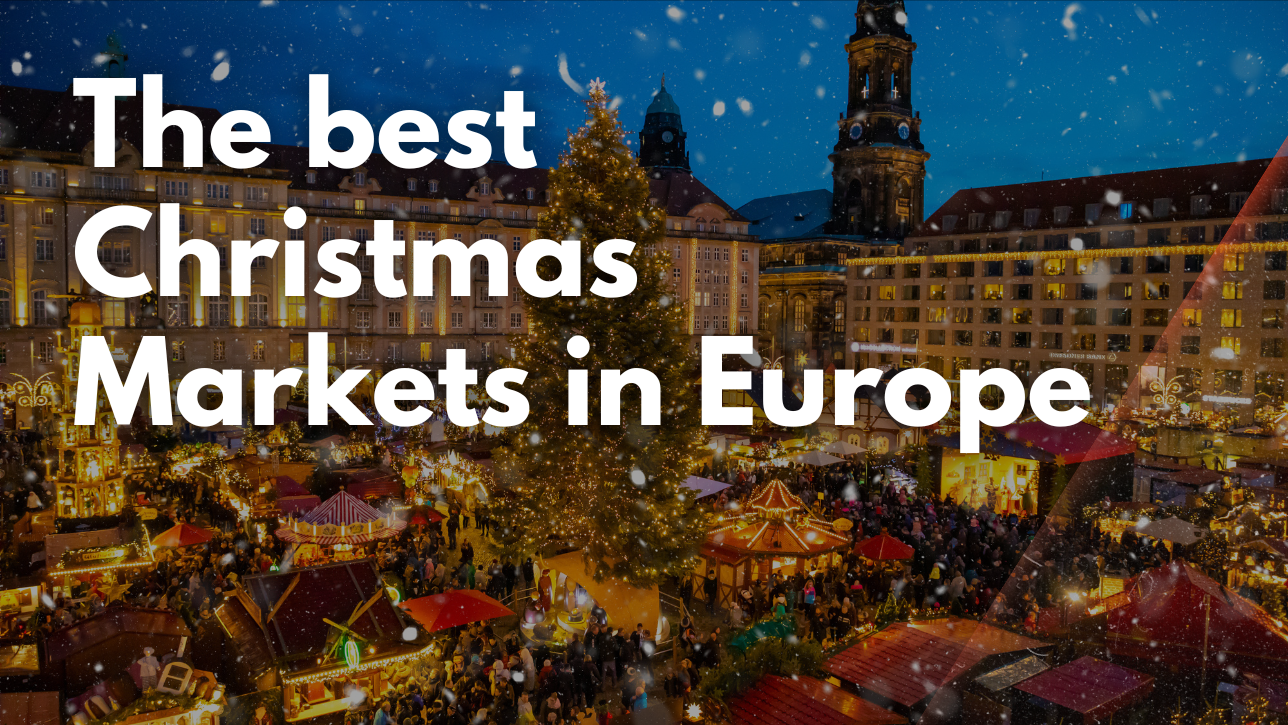
As winter blankets Europe, its cities come alive with the twinkling lights, warm aromas, and festive cheer of Christmas markets. In 2025, these magical markets promise cozy evenings sipping mulled wine, browsing handcrafted treasures, and savoring seasonal treats. From historic squares to fairytale-like villages, our curated list of the top 6 best christmas markets in Europe will guide you to the most enchanting destinations for an unforgettable holiday escape. Let’s explore the best places to soak up the Christmas spirit in 2025!
rom medieval squares to riverside stalls, our curated list of the top 6 Christmas markets in Europe showcases the best destinations for an unforgettable holiday adventure. Whether you’re seeking romance, family fun, or cultural immersion, these markets deliver a sparkling experience.
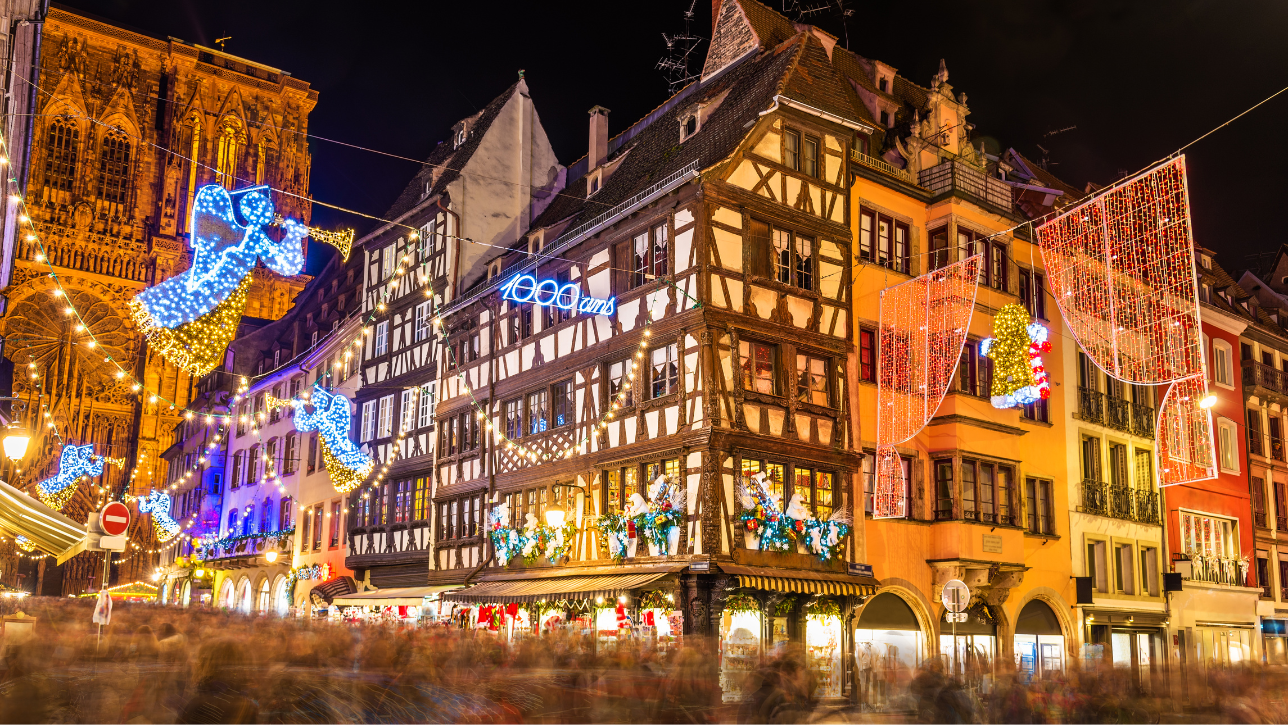
Strasbourg, France: The Capital of Christmas
Nestled in the heart of Alsace, Strasbourg’s Christkindelsmärik is one of Europe’s oldest and most iconic Christmas markets, dating back to 1570. From late November to late December (November 26–December 27, 2025), over 300 wooden chalets spill across Place Kléber, Place de la Cathédrale, and beyond, framed by half-timbered houses and the towering Strasbourg Cathedral. Browse artisan ornaments, savor Alsatian specialties like flammekueche (savory tart) and vin chaud (mulled wine), and glide on the ice rink under a giant Christmas tree. Evening light displays and carol concerts add to the magic.
Strasbourg blends French and German traditions, creating a unique festive vibe. Its pedestrian-friendly layout and romantic canals make it perfect for couples and families alike. Expect a dazzling season with expanded eco-friendly initiatives, like sustainable crafts and local food stalls.

Budapest, Hungary: A Romantic Winter Feast
Budapest’s Advent Feast at the Basilica has been crowned Europe’s best Christmas market multiple times, and 2025 promises another showstopper (November 28, 2025–January 1, 2026). Set against the stunning St. Stephen’s Basilica, this market sparkles with over 100 stalls offering Hungarian crafts, hand-painted ornaments, and hearty dishes like goulash and kürtőskalács (chimney cake). The ice rink encircling a towering Christmas tree invites skaters, while nightly light shows projected onto the Basilica create a mesmerizing backdrop.
Budapest blends affordability with festive grandeur, offering a lively yet intimate experience. New for 2025, expect more vegan food options and eco-conscious vendors, appealing to modern travelers. Its thermal baths are a cozy post-market retreat.
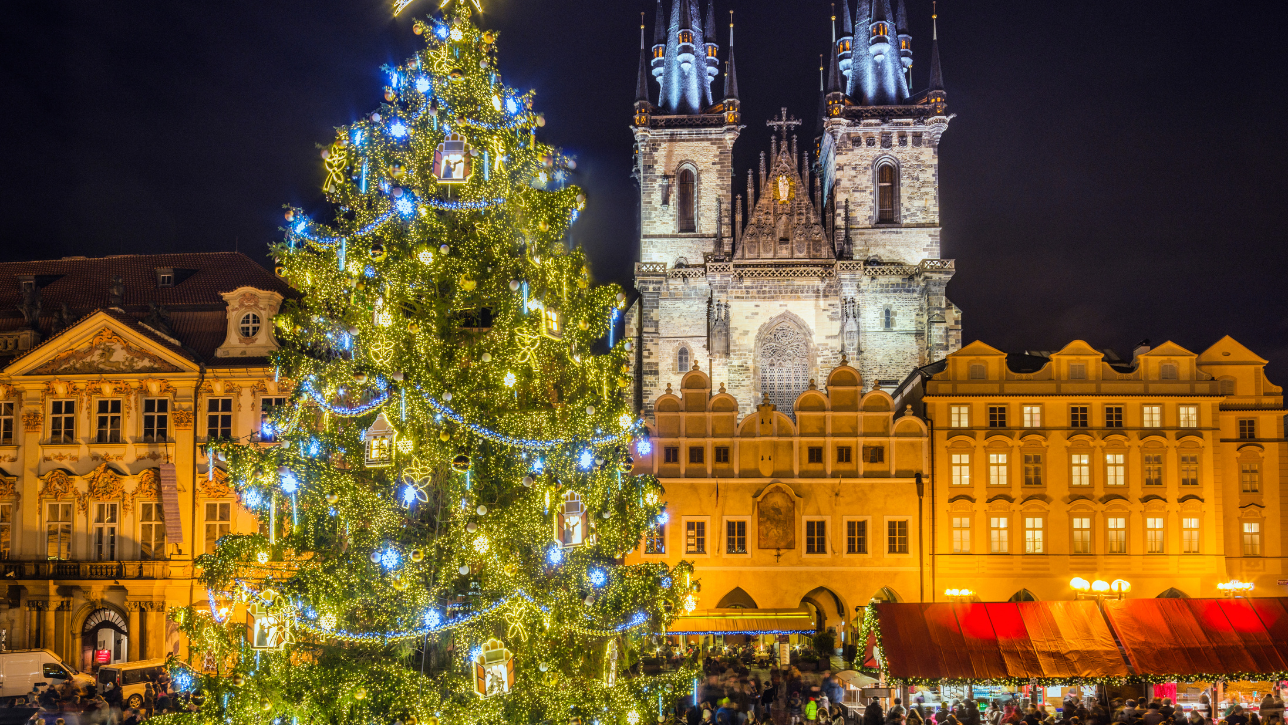
Prague, Czech Republic: A Fairytale Glow
Prague’s Christmas markets transform the city’s medieval charm into a winter wonderland from November 29, 2025, to January 6, 2026. The heart of the festivities lies in Old Town Square, where a massive Christmas tree and wooden stalls sell Bohemian glassware, wooden toys, and svařák (Czech mulled wine). Nearby, Wenceslas Square buzzes with live carols and sizzling klobása (sausages). The illuminated Prague Castle in the distance adds a storybook touch, while nativity scenes and craft workshops delight families.
Prague’s markets are compact yet vibrant, perfect for a weekend getaway. In 2025, look for enhanced light displays and more artisanal food vendors, elevating the experience without losing tradition.
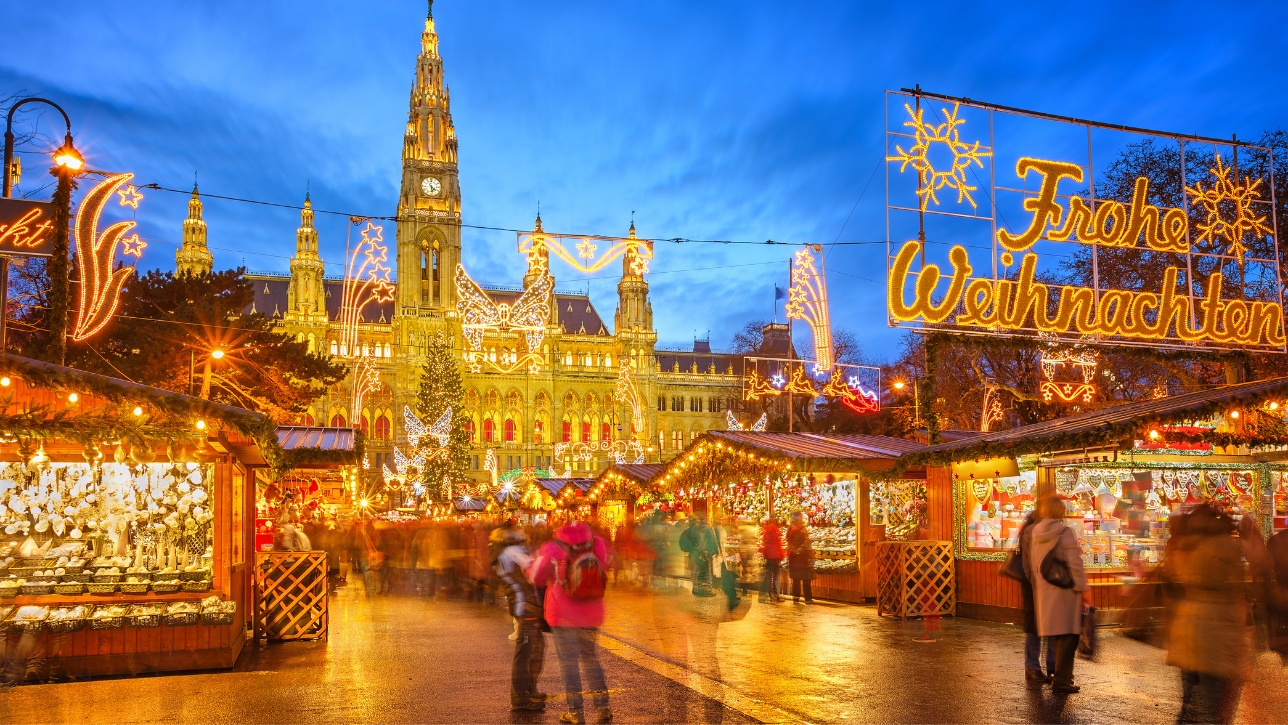
Vienna, Austria: A Classic Christmas Symphony
Vienna’s Christmas markets are a timeless celebration of elegance, running from mid-November to late December (November 15–December 26, 2025, for most). The Rathausplatz Christmas Market dazzles with over 150 stalls, a sparkling ice rink, and a Ferris wheel, all set against the grand City Hall. Browse handcrafted candles, glass baubles, and gingerbread, and warm up with glühwein or hot punch. Smaller markets, like Schönbrunn Palace and Belvedere Palace, offer intimate settings with classical music and imperial charm.
Vienna’s blend of sophistication and festivity is unmatched. Expect expanded children’s activities, like carousel rides and storytelling, plus more vegan and organic food stalls in 2025, catering to diverse tastes.

Cologne, Germany: A Cathedral-Crowned Fest
Cologne’s Christmas markets, running from November 17 to December 23, 2025, are a German classic, with the Cologne Cathedral Market as the star. Over 150 stalls surround the iconic Gothic cathedral, offering wooden toys, nutcrackers, and reibekuchen (potato pancakes). The Harbour Christmas Market adds a maritime twist with waterfront views, while the Market of Angels in Neumarkt sparkles with starry lights and whimsical decor. Ice rinks, live choirs, and glühwein in collectible mugs create a festive buzz.
Cologne’s markets blend tradition with variety, appealing to all ages. In 2025, expect more interactive craft workshops and sustainable gift options, plus extended evening hours for magical strolls.
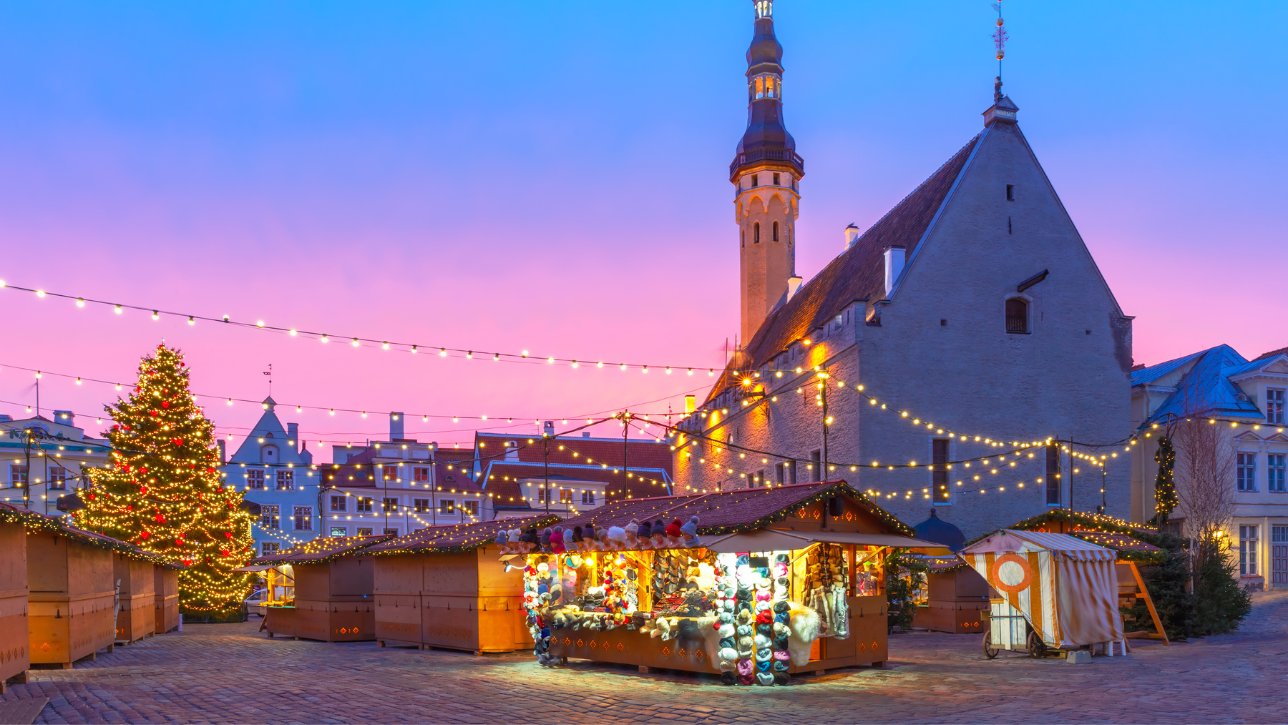
Tallinn, Estonia: A Medieval Winter Gem
Tallinn’s Christmas market in Raekoja Platz (November 28, 2025–January 7, 2026) is a hidden treasure, voted Europe’s best in 2019. Set in the UNESCO-listed Old Town, wooden stalls sell Estonian woolens, hand-carved ornaments, and smoked cheeses, framed by cobblestone streets and medieval spires. Savor piparkoogid (gingerbread) and hot glögi (mulled wine), and let kids meet Santa near the glowing Christmas tree. Carolers, folk dancers, and a cozy vibe make it unforgettable.
Tallinn offers an intimate, less crowded alternative to bigger markets, with a fairytale charm enhanced by potential snowfall. New for 2025, expect more cultural performances and pop-up food stalls showcasing Baltic flavors.
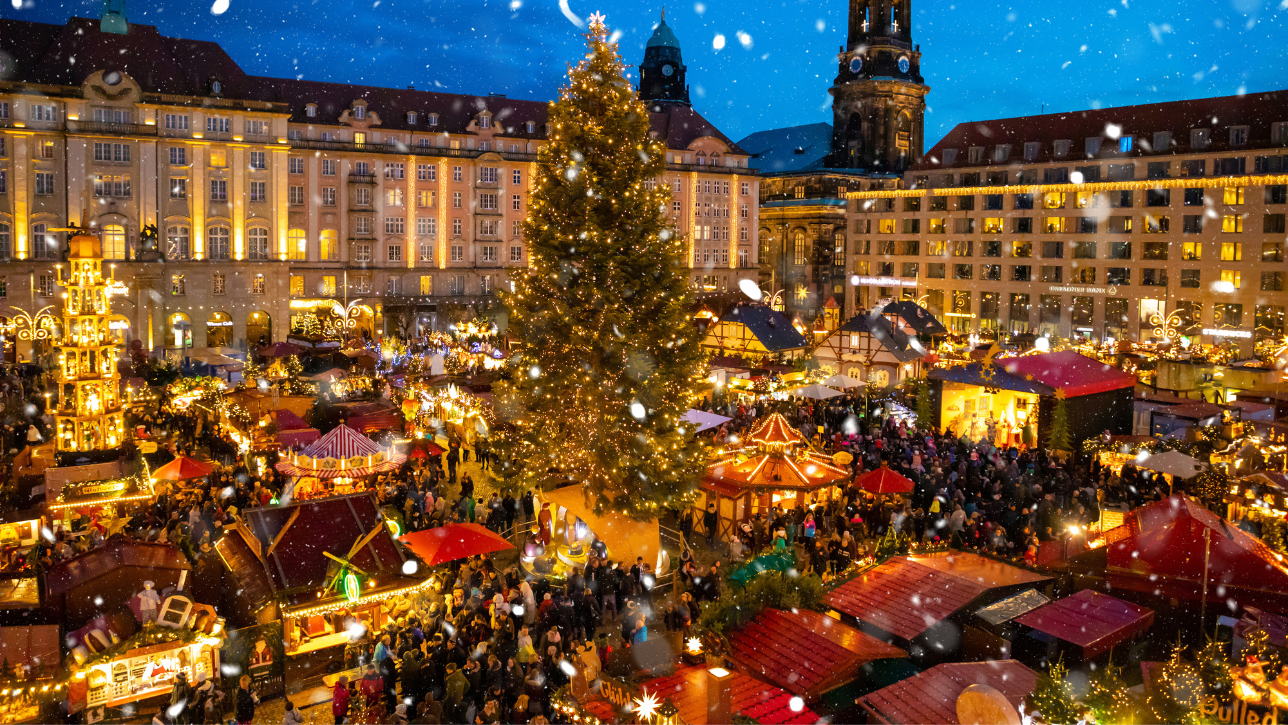
Most Christmas markets run from mid-November to late December, with some extending into early January (e.g., Tallinn, January 7, 2026). Check exact dates for 2025—Strasbourg (Nov 26–Dec 27) and Cologne (Nov 17–Dec 23) have shorter seasons, while Prague stretches to January 6. Aim for late November to mid-December to avoid peak crowds around Christmas Eve. Weekdays, especially Monday to Wednesday, are quieter than weekends.
European winters can be chilly, with temperatures in cities like Vienna or Munich often dipping to 0°C (32°F) or below, especially at night. Layer up with a warm coat, scarf, gloves, hat, and waterproof boots—cobblestone streets can get wet or icy. Markets are mostly outdoors, so thermal socks and a lightweight umbrella or hooded jacket are lifesavers for rain or snow.
While many stalls at major markets like Vienna’s Rathausplatz or Prague’s Old Town Square accept cards, smaller vendors often prefer cash, especially for trinkets or street food. Carry local currency (Euros in most markets, Hungarian Forint in Budapest, Czech Koruna in Prague) in small denominations for convenience. ATMs are plentiful, but avoid high fees by withdrawing from bank-affiliated machines.
Christmas markets are a foodie’s paradise, but costs for mulled wine (€3–€6), sausages (€4–€8), or gingerbread (€2–€5) add up. Many markets, like Cologne and Munich, charge a deposit (€2–€5) for reusable mugs, refunded when returned. Set a daily budget of €20–€40 per person for snacks, drinks, and small gifts to enjoy without overspending.

Markets open around 10 AM–11 AM and close between 8 PM–10 PM, with peak crowds from 4 PM–7 PM. Visit in the morning for relaxed browsing and better photos, especially in photogenic spots like Tallinn’s Raekoja Platz or Bruges’ Markt Square. Alternatively, late evenings offer a quieter vibe with stalls glowing under festive lights—perfect for romance or soaking up the atmosphere.
Markets brim with handcrafted treasures—think Bohemian glass in Prague, amber jewelry in Tallinn, or nutcrackers in Cologne—but quality varies. Compare prices across stalls, as similar items (e.g., ornaments or scarves) may differ by €5–€10. Focus on local specialties: bredele cookies from Strasbourg, speculoos biscuits from Bruges, or leather goods from Budapest. Bargaining is rare, so prioritize authenticity over haggling.
Each market offers regional delights that are half the fun. Try flammekueche (savory tart) in Strasbourg, kürtőskalács (chimney cake) in Budapest, or reibekuchen (potsato pancakes) in Cologne. For drinks, sample glühwein (mulled wine) or non-alcoholic options like hot apple punch for kids. Vegetarian and vegan options are growing—expect plant-based sausages in Vienna and dairy-free desserts in Munich.
Christmas markets are generally safe, but crowded areas attract pickpockets, especially in Prague or Vienna. Keep wallets in front pockets, use a crossbody bag, and avoid flashing valuables. Stick to well-lit paths at night, and check local health guidelines for 2025, as some markets may have crowd-control measures. If drinking glühwein, pace yourself—alcohol content can sneak up!
Maximize your trip by pairing markets with local sights. In Strasbourg, explore Petite France’s canals; in Budapest, relax at Széchenyi Thermal Bath post-market; in Prague, visit Charles Bridge at dawn. Vienna’s Schönbrunn Palace and Cologne’s Rhine River cruises add cultural depth, while Tallinn’s Alexander Nevsky Cathedral offers stunning views. Many attractions host smaller markets, too, for double the festive fun.
Europe’s Christmas markets are more than shopping—they’re a celebration of heritage, community, and winter joy. In 2025, expect eco-friendly trends, like biodegradable decorations and local sourcing, alongside timeless traditions. Whether you’re skating under Budapest’s lights, savoring Prague’s sausages, or browsing Strasbourg’s crafts, these markets promise memories to cherish. Bundle up, grab a mug of something warm, and immerse yourself in the season’s magic!
Ready to plan your festive getaway? Share your best Christmas markets destination below, and let’s make 2025 your merriest holiday yet!
📞 Contact and buy Way2go Travel SIM Today!
Website: https://way2go.vn
Hotline: 090.222.7715
Email: [email protected]
Enrich your travel experience while staying connected
